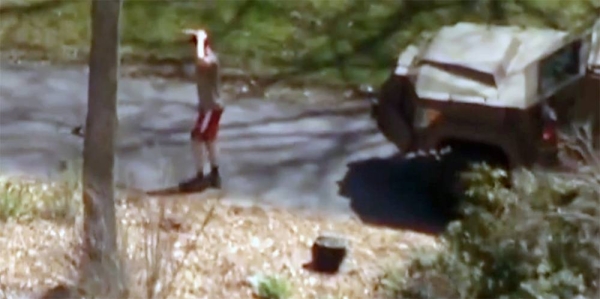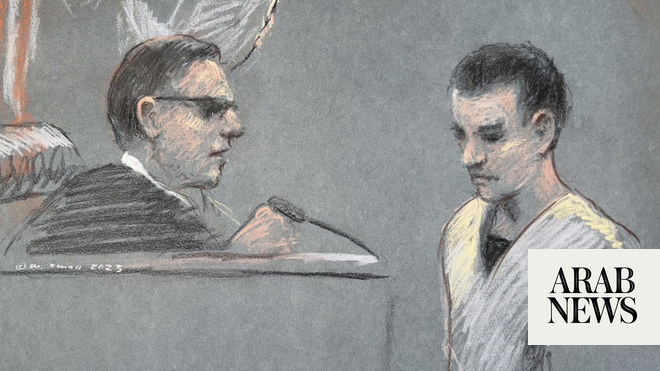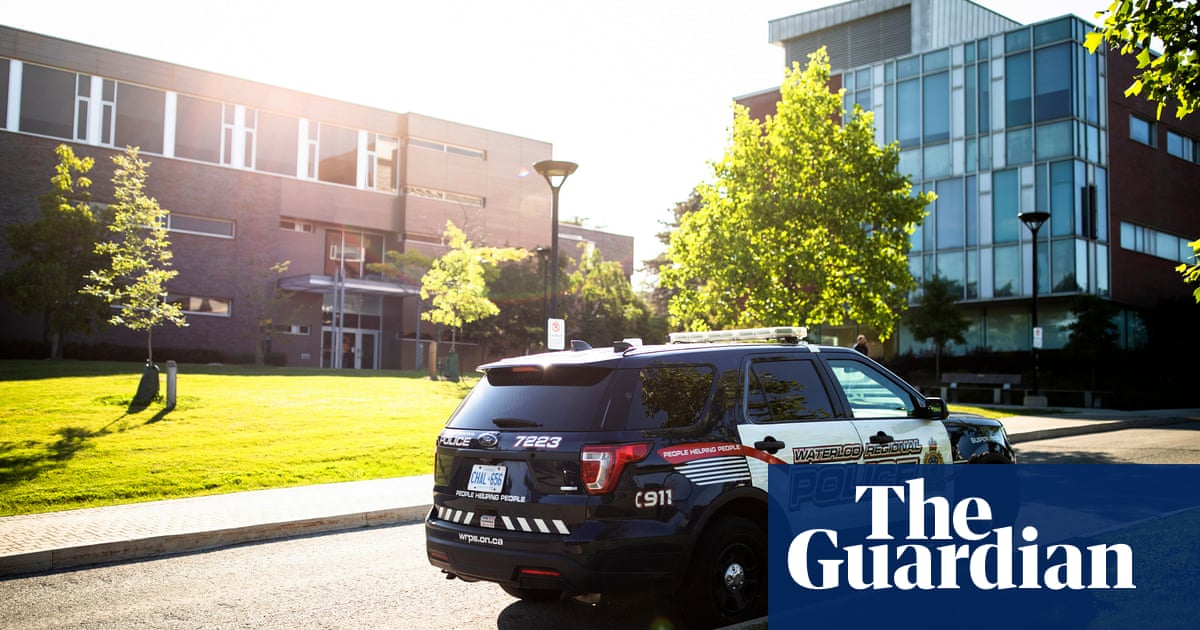
Jack Teixeira, the air national guardsman arrested on suspicion of leaking hundreds of secret defence documents, has been charged in a Boston court on two counts under the Espionage Act as Washington reeled from the fallout of the worst leaks of US intelligence in at least a decade.
The clean-cut 21-year-old was brought into court in a beige jumpsuit, and his handcuffs were removed by a bailiff. He sat quietly, turning only once to three family members to smile weakly.
During the brief hearing, the US prosecutor Nadine Pellegrini said the government would seek 10 years on each of the charges Teixeira faces. He was not required to enter a plea, which is likely to come at his next appearance, on Wednesday, when the presiding US judge, David Hennessy, will hear arguments over his detention ahead of a trial.
The attorney general, Merrick Garland, underlined the seriousness of the offences.
“There are very serious penalties associated with that. People who sign agreements to be able to receive classified documents acknowledge the importance to the national security of not disclosing those documents, and we intend to send that message of how important it is to our national security,” Garland said.
In an affidavit attached to the charges, an FBI special agent said Teixeira, an airman first class at the Otis airbase in Massachusetts, had security clearance for one of the highest levels of classification, “top secret/sensitive compartmented information” (TS/SCI).
The FBI agent, Patrick Lueckenhoff, from the counterintelligence division of the Washington field office, said there was “probable cause to believe that Teixeira improperly and unlawfully retained and transmitted national defence information classified at the TS/SCI level to persons not authorised to receive such information”.
The laws he quoted included Title 18, section 793, part of what is commonly known as the Espionage Act. In his affidavit, Lueckenhoff, gave some details of the manhunt for the leaker of a string of documents that have revealed sensitive details about US, allied and Ukrainian military deployments, US penetration of Russian intelligence and military networks, and US intelligence eavesdropping on key allies.
According to Lueckenhoff, he had been identified by a member of an internet group he led on Discord, a gaming messaging platform, and a “social media platform” – presumably a reference to Discord – handed over Teixeira’s billing address and other details to the FBI. The FBI then put his driver’s licence photo in a lineup of similar photos to the witness, who identified him.
The FBI also looked at the files Teixeira had accessed from the secure government classified intelligence system, noting that on 6 April, after the documents he had leaked were reposted by another member of the group on another server, the air national guardsman started searching the system under the term “leaks”, in an apparent effort to see if an investigation had been launched.
According to the FBI witness, Teixeira initially posted extracts from secret documents as text, but became “concerned that he may be discovered making the transcriptions of text in the workplace, so he began taking the documents to his residence and photographing them”.
He is alleged to have started uploading photographs in January on “Server 1”, an apparent reference to Thug Shaker Central, the server Teixeira is believed to have moderated.
The charges only refer to one document, about the status of the Russian invasion of Ukraine. It seems likely this is a sample document, and that the prosecution will cite more of the documents in possible additional charges or in the course of a trial.
As Teixieira was led out of court on Friday morning, his father called out: “Love you, Jack.” Teixiera responded: “Love you, Dad.”
Joe Biden issued a statement commending law enforcement for the arrest, and pledging to review government security procedures.
“While we are still determining the validity of those documents, I have directed our military and intelligence community to take steps to further secure and limit distribution of sensitive information, and our national security team is closely coordinating with our partners and allies,” the US president said.
Teixeira was an airman first class assigned to the air national guard’s 102nd intelligence wing with the title of “cyber transport systems journeyman”. A defence official told CNN that he was involved in a “24/7 operational mission” that packages intelligence from different sources into a summary for the most senior military leaders around the world.
His job was not to do the packaging but to maintain the network on which that highly classified intelligence was stored, and so needed a high-level clearance.
The leaks have led to an urgent Pentagon review of how widely it shares national security secrets on intranet systems to which Teixeira, a low-ranking cyber specialist in a Massachusetts air national guard base, had access. In the US government system, more than 1.2 million people have access to classified material labelled as top secret.
US allies have played down the significance of the leak in public but have sought reassurance from Washington in private that the problem will be addressed and that there are not more damaging leaks in circulation.
Teixeira has been hailed as a hero by some elements on the US far right, and it could become an even bigger headache for the Biden administration if the investigation and trial reveal sloppiness in the general handling of secrets.
As the young air guardsman was charged, more of the documents from the trove he is alleged to have leaked have been uploaded on to Thug Shaker Central. The Washington Post says it has about 300 documents, three times as many as were previously thought to be in circulation.
The Post reported on Friday on one document drawn from US intelligence, saying that Russian Spetsnaz special forces units have been severely depleted from casualties in the war in Ukraine where they have repeatedly been thrown into the frontline.
The document included photos of the southern Russian base of 22nd Separate Spetsnaz Brigade before and after the brigade’s deployment in Ukraine.
The before picture shows it full of rows of vehicles, while in the after photo, the parking lot looks less than half full. The document said “all but one of five Russian Separate Spetsnaz Brigades that returned from combat operations in Ukraine in late summer 2022 suffered significant losses.”
The heavy casualties among Russian special forces are well known, but the document and photos could reveal US intelligence methods. Other document have mentioned a little-known and highly advanced US satellite imaging technology known as Lapis, being used to observe Russian troop movements.
Another top-secret intelligence summary dated 23 February states that Beijing had approved the incremental provision of weapons to Moscow, which it would disguise as civilian items, according to a report in the Washington Post. The intelligence was gathered by US agents eavesdropping on Russia’s secret service discussions. The Russians said China’s central military commission wanted the shipments to remain secret, it added.












